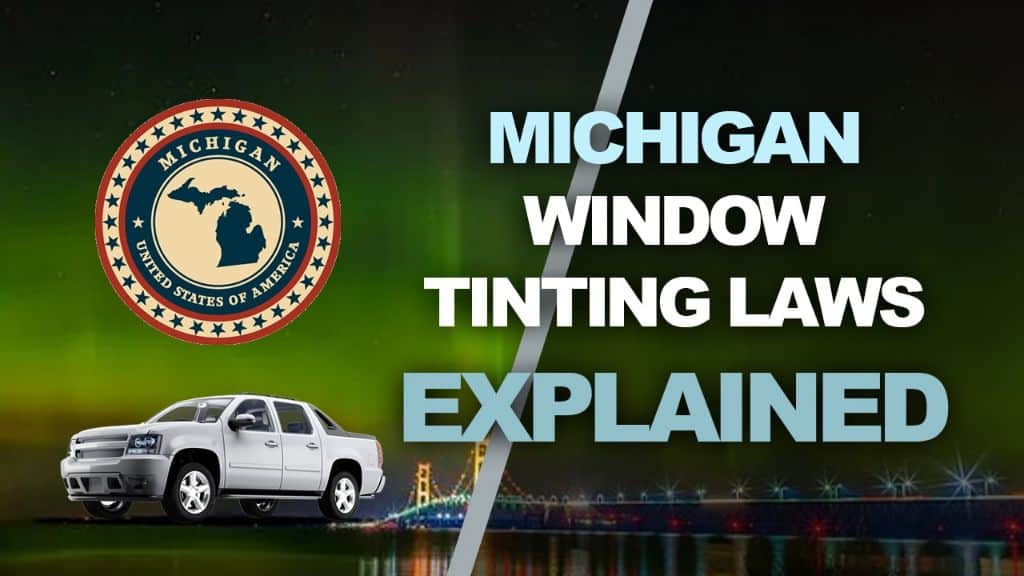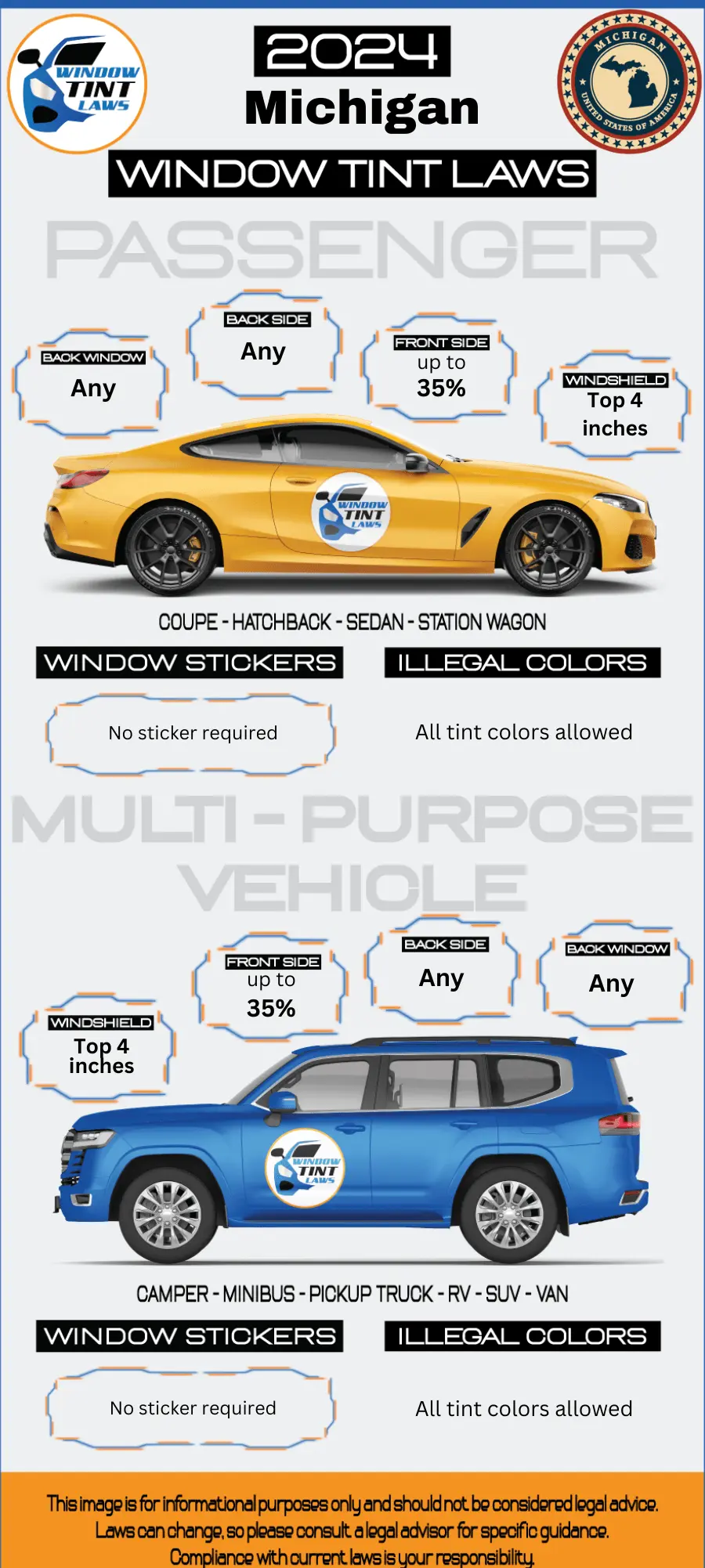

Article Created by Ryan Pietrzak
Last updated on February 14, 2024Michigan Tint Laws – 2024 Updated Legal Tint Limit
Please note that Michigan Tint Laws Regulation can change daily and may be interpreted differently at the city or county level. We recommend verifying this information with your local DMV or law enforcement agencies. We have manually fact-checked this content using official state resources. Michigan enacted tinting laws in 2000. If any information provided is incorrect or outdated, please contact us so we can make the necessary corrections. Thank you.
2024 Michigan Tint Laws – Legal Tint Limit For Passenger Vehicles
- Front Windshield: Tint is allowed on the top 4 inches of the windshield.
- Front seat side windows: Must allow more than 35% of light in.
- Back seat side windows: Any tint darkness can be used
- Rear window: Any tint darkness can be used
2024 Michigan Tint Laws – Legal Tint Limit For Multi-Purpose Vehicles
- Front Windshield: Tint is not allowed on the windshield except for the top 4 inches.
- Front seat side windows: up to 35% tint darkness can be used
- Back seat side windows: Any tint darkness can be used
- Rear window: Any tint darkness can be used

- Medical exemptions: Michigan tint laws permit darker tints on front side windows with a doctor’s note
- Michigan tint laws prohibit metallic or reflective tint on any of the windows
- Michigan tint laws are statewide with no additional local regulations
- Violating Michigan tint laws can result in a fine of $95.
What does VLT Mean according to Michigan Tint Laws?
- Window tint film’s light transmission is measured as VLT (Visible Light Transmission) and each state has its own legal limits for VLT on car windows.
- A HIGHER VLT means that more light is allowed to pass through the window tint film.
- Example: a 75% tint will allow 75% of the light to pass through whereas a 5% tint will only allow 5% of the light to pass through, making the 5% tint a much darker film.
- Michigan window tint laws has specific VLT limits for Passenger Vehicles and Multi-Purpose Vehicles.
FAQ’s Regarding Michigan Tint Laws and Michigan Legal Tint Limit
What is the darkest legal tint in Michigan?
Under Michigan tint laws, the legal limit for window tint darkness varies depending on the window. For the front side windows, only the top 4 inches can be tinted, and the tint must allow more than 35% of light in. The back side and rear windows can be tinted up to 35% darkness. The windshield can have a non-reflective tint on the top 4 inches. These regulations are designed to balance the benefits of tinting with safety and visibility concerns.
Are police exempt from window tint laws in Michigan?
Under Michigan tint laws, law enforcement vehicles are typically exempt from the standard window tint laws that apply to civilian vehicles. This exemption allows police vehicles to have window tints that may not necessarily comply with the regulations applicable to regular vehicles. This is usually in place to accommodate the operational needs and requirements of law enforcement agencies.
How do I get a tint waiver in Michigan?
In Michigan, drivers with certain medical conditions requiring protection from sunlight may apply for a window tint waiver. This process involves submitting an application along with a physician’s statement verifying the medical necessity for darker window tint. Once approved, this waiver permits window tinting that exceeds the standard legal limits, accommodating specific health-related needs.
How much is a tint ticket in Michigan?
Violating Michigan tint laws can result in a fine of $95. Additionally, this violation can also cost you 2 points on your driver’s license. It’s important to adhere to the state’s tinting regulations to avoid these penalties.
Can you get pulled over for tint in Michigan?
Yes with Michigan tint laws, you can be pulled over for having window tint that does not comply with the state’s regulations. If your vehicle’s tint is too dark or covers more area than allowed by law, it can attract the attention of law enforcement officers. Michigan allows only the top 4 inches of the windshield and front side windows to be tinted, with a minimum of 35% light transmittance. Non-compliance with these tinting laws can result in a traffic stop and potential fines.
How to get a Tint Exemption in Michigan
The state of Michigan allows medical exemptions for persons who are light-sensitive or photosensitive. The owner or operator of a motor vehicle must have a letter signed by a licensed physician in the vehicle.
Special window treatments installed due to medical conditions must not interfere or obstruct the driver’s vision of the highway or intersecting highway.
Michigan does not specify minimum window tint darkness allowed under medical exemptions, but it must have less than 35% light reflection.
For more information regarding window tint medical exemptions in _____ you can check out this resource:

Ryan Pietrzak
Creator of Windowtintlaws.us
